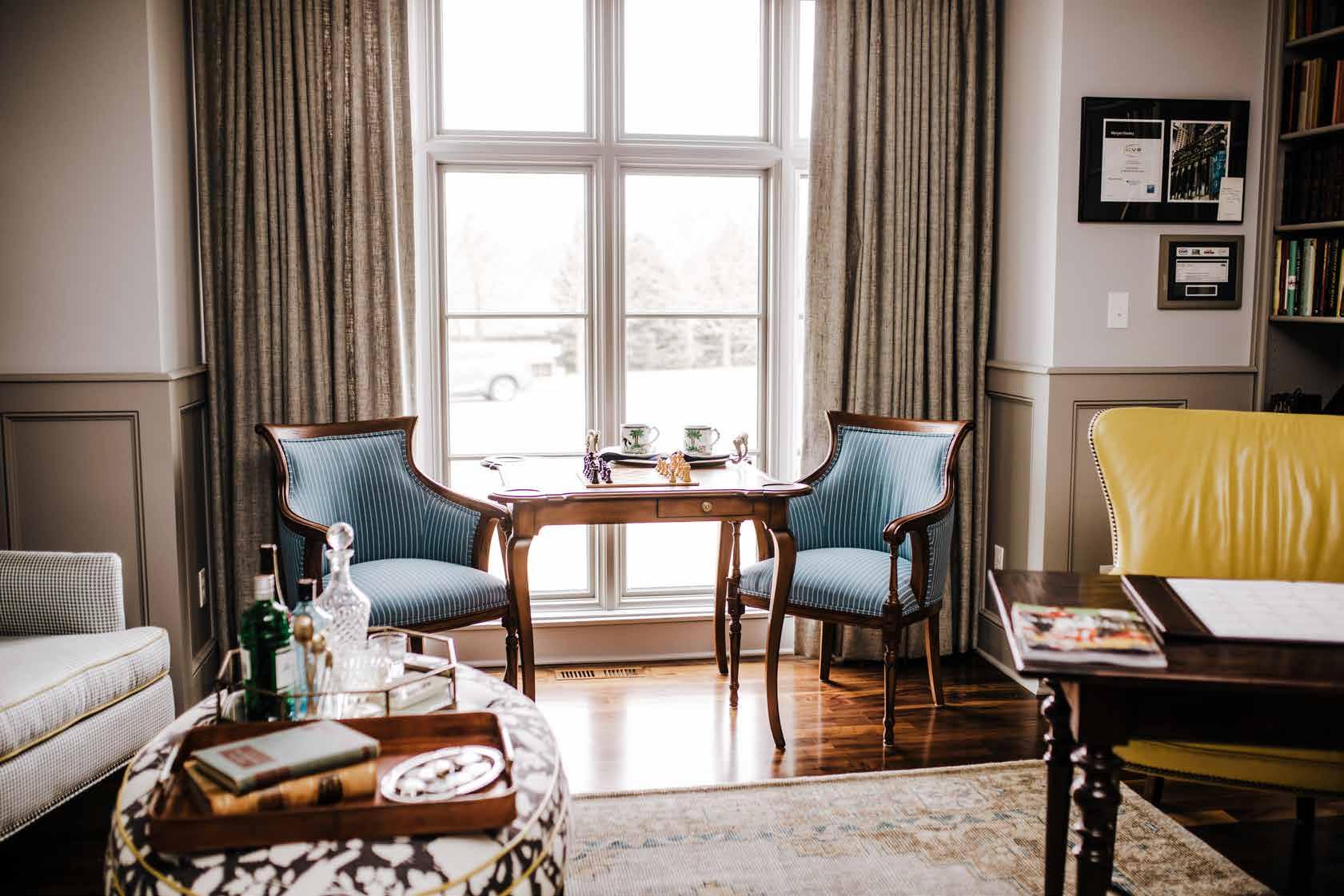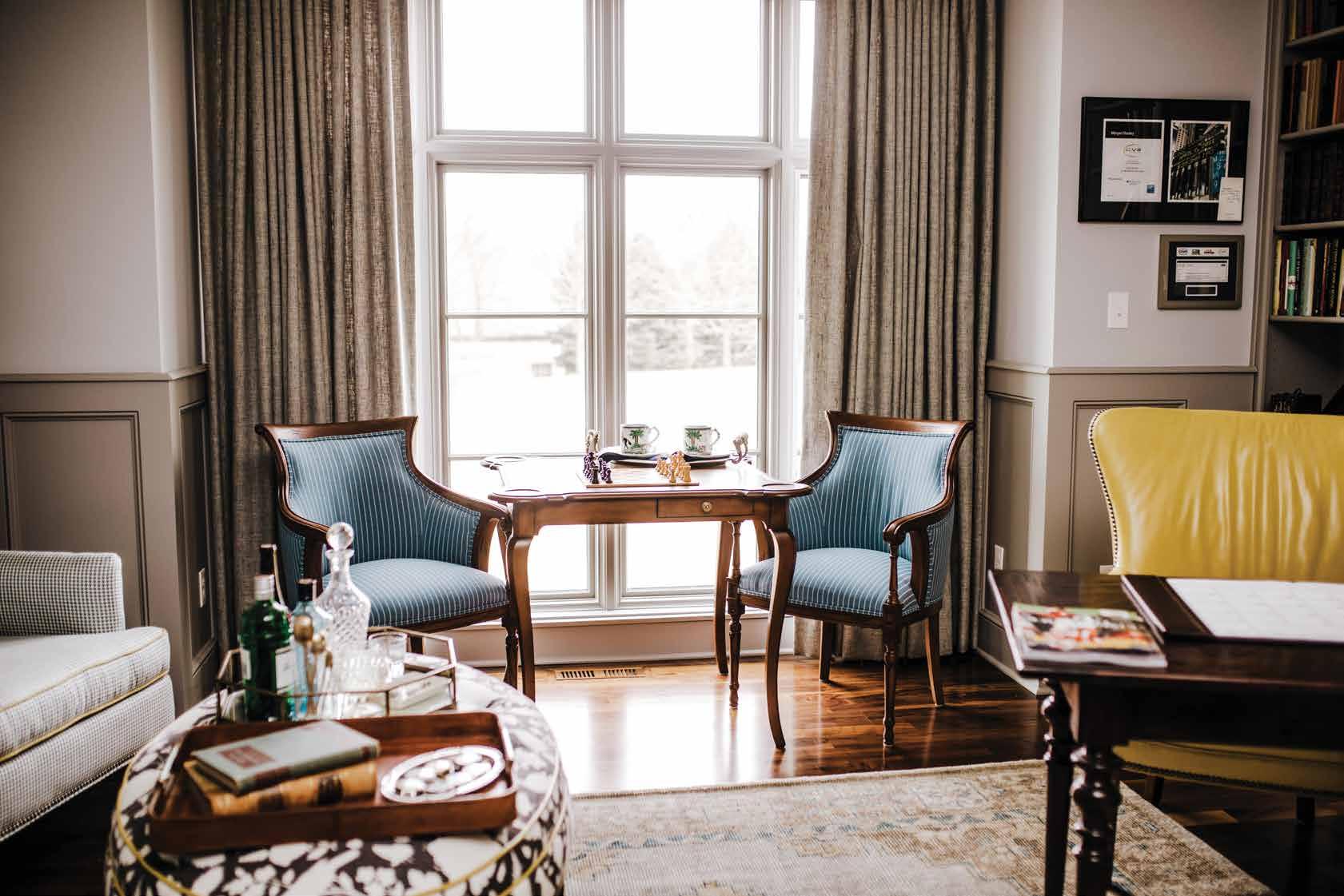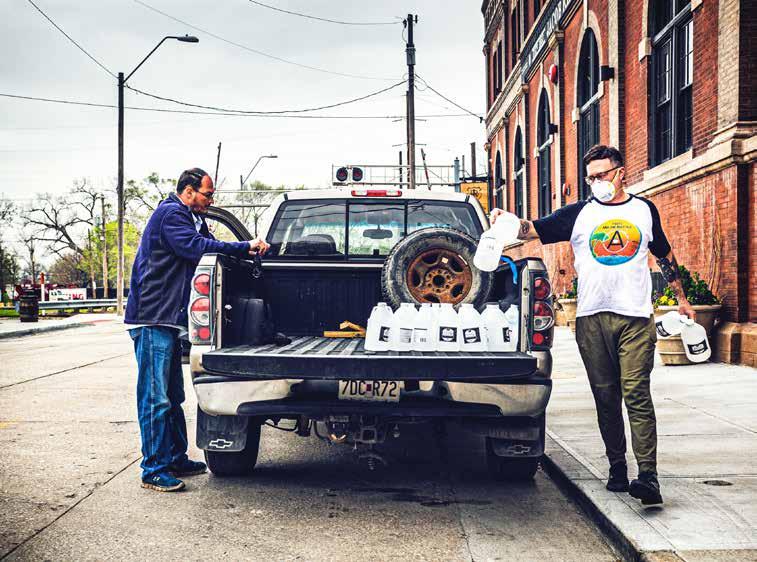
5 minute read
KC ORIGINALS
may adapt well to working remotely, there are a host of individual considerations and circumstances that must be considered before employing new workplace practices more broadly. Namely, do the people you’re asking to work from home have the environments and tools needed to effectively do this? Will their living or household arrangements allow them to be productive at home? Which allowances are you prepared to make knowing that even those who work remotely full time often want occasional interaction with others?
Alongside a strategic exercise, workplace leaders should leverage what they’ve learned during this crisis to fuel creativity and agility in their organizations. Here are several workplace remedies that can be implemented now:
Advertisement
Transition to unassigned seating that allows employees to establish their own boundaries and pick a seat that enables distancing.
People will have different comfort levels to returning to the workplace and should be empowered to make choices about where they are comfortable working upon return. Increase options for how – and where – staff work, which might include more scrum spaces, focus work spaces, and lounge seating.
Consider going to a four-day work week and staggering teams across five days to reduce density by up to 20 percent on any given day.
Reorient work points so individuals do not directly face each other.
Remove seats at communal tables and in conference rooms to give people additional personal space. Or transition these rooms into scrum spaces by removing the table entirely to give people more space and eliminate touchpoints.
Install voice activation or hands-free automation controls that reduce the need to contact commonly touched items.
Create clean desk policies that allow surfaces to be properly cleaned daily and update facility maintenance contracts to ensure these steps are taken.
Switch to VOIP communication technology instead of phone handsets and eliminate shared keyboard trays.
Assign lockers, file drawers, or storage cabinets to individuals to separate personal items.
Remove trash cans from individual desks and replace them with a communal location that consolidates sanitation.
Consider furniture and equipment upgrades with antimicrobial materials.
Meeting room technology and design must facilitate an experience that works for a mix of virtual and in-person participants.
Establish screening protocols and fever checks for everyone entering the workplace.
Work with building management to improve air circulation, filtration, and ventilation and confirm cleaning protocols.
Incorporate increased natural light and facilitate programming that focuses on mindfulness and the health and wellness of staff.
Consider how company culture can be built with a workforce that may now be divided between the office and their homes with creative internal web platforms and technology.
While the full impact of COVID-19 on work and the workplace has yet to be determined, we hope the ideas and strategies shared here provide some direction. As Kansas City’s workplaces and businesses adjust to a new normal post COVID-19, there is opportunity to reimagine how – and where – your people work.
ABOUT THE AUTHOR
Peter Sloan, AIA, is the director of design, interiors for HOK’s Kansas City practice.
He specializes in workplace strategy and design. peter.sloan@hok.com



Rieger Redux.
Local distiller makes quick pivot to help its business and the community.
The Kansas City hospitality community has seen severe industry-changing effects because of the COVID-19 crisis. Lucy and Andy Rieger, of J. Rieger & Co., which produces whisky, gin, vodka, and a coffee liqueur as well as owning their distillery and event space in the East Bottoms, are industry leaders who made a quick pivot that has done more than save their business.
As the news of the pandemic began to not only spread but seem very real, Lucy and Andy Rieger acted quickly.
“When the first rumblings of a full shutdown were happening, Andy said, ‘I promised to take care of everyone,’ Lucy Rieger says. “He wouldn’t sleep until he figured out a solution.”
As they could see the impact of the virus, the couple had been discussing possible shifts to keep their staff employed. They were forced to close to the public on March 19, but were determined not to lay anyone off. Then opportunity presented itself.
“A nursing home called us and said that a distillery in Seattle was producing limited quantities of hand sanitizer and asked if we could do the same,” Lucy says.
Responding to the critical shortage, the couple began to lay out a business plan for a mass-scale operation, contacted suppliers, and got to work.
“We had the ability to help; so we did,” Andy says.
Initially, the Riegers thought they would be producing hand sanitizer for a few weeks. But the need exceeded their original expectations.
“We were able to act fast initially and secure the supplies we needed,” Andy says. “We put a great process in place and are currently shipping nationwide.”
To date, Rieger has produced more than 250,000 bottles of Rieger’s Remedy and has not laid off a single

employee. Beyond that, they’ve increased their headcount from 53 to 65 and are feeding their staff three meals a day.
“It was important to us to provide the most financial and food security possible,” Lucy says.
The Riegers are aware that they could have shut down and preserved cash to protect the company. For a young couple with a two-year-old son who were expecting their second baby, it would have been a plan that made sense.
“It was hands down the hardest time of our lives physically and mentally,” Andy says. “But laying people off went against what we stood for as a family business.”
Beyond the distillery, the Riegers had renovated the old Heim Brewery bottling house building in the East Bottoms as







